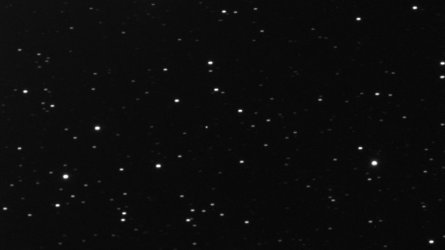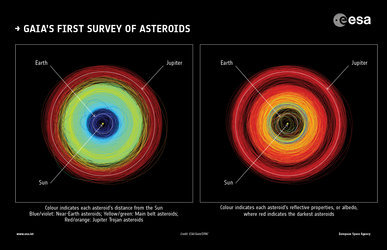Accept all cookies Accept only essential cookies See our Cookie Notice

About ESA
The European Space Agency (ESA) is Europe’s gateway to space. Its mission is to shape the development of Europe’s space capability and ensure that investment in space continues to deliver benefits to the citizens of Europe and the world.
Highlights
ESA - United space in Europe
This is ESA ESA facts Member States & Cooperating States Funding Director General Top management For Member State Delegations European vision European Space Policy ESA & EU Space Councils Responsibility & Sustainability Annual Report Calendar of meetings Corporate newsEstablishments & sites
ESA Headquarters ESA ESTEC ESA ESOC ESA ESRIN ESA EAC ESA ESAC Europe's Spaceport ESA ESEC ESA ECSAT Brussels Office Washington OfficeWorking with ESA
Business with ESA ESA Commercialisation Gateway Law at ESA Careers Cyber resilience at ESA IT at ESA Newsroom Partnerships Merchandising Licence Education Open Space Innovation Platform Integrity and Reporting Administrative Tribunal Health and SafetyMore about ESA
History ESA Historical Archives Exhibitions Publications Art & Culture ESA Merchandise Kids Diversity ESA Brand CentreLatest
Space in Member States
Find out more about space activities in our 23 Member States, and understand how ESA works together with their national agencies, institutions and organisations.
Science & Exploration
Exploring our Solar System and unlocking the secrets of the Universe
Go to topicAstronauts
Missions
Juice Euclid Webb Solar Orbiter BepiColombo Gaia ExoMars Cheops Exoplanet missions More missionsActivities
International Space Station Orion service module Gateway Concordia Caves & Pangaea BenefitsLatest
Space Safety
Protecting life and infrastructure on Earth and in orbit
Go to topicAsteroids
Asteroids and Planetary Defence Asteroid danger explained Flyeye telescope: asteroid detection Hera mission: asteroid deflection Near-Earth Object Coordination CentreSpace junk
About space debris Space debris by the numbers Space Environment Report In space refuelling, refurbishing and removingSafety from space
Clean Space ecodesign Zero Debris Technologies Space for Earth Supporting Sustainable DevelopmentLatest
Applications
Using space to benefit citizens and meet future challenges on Earth
Go to topicObserving the Earth
Observing the Earth Future EO Copernicus Meteorology Space for our climate Satellite missionsCommercialisation
ESA Commercialisation Gateway Open Space Innovation Platform Business Incubation ESA Space SolutionsLatest
Enabling & Support
Making space accessible and developing the technologies for the future
Go to topicBuilding missions
Space Engineering and Technology Test centre Laboratories Concurrent Design Facility Preparing for the future Shaping the Future Discovery and Preparation Advanced Concepts TeamSpace transportation
Space Transportation Ariane Vega Space Rider Future space transportation Boost! Europe's Spaceport Launches from Europe's Spaceport from 2012Latest

Asteroids under the influence
Thank you for liking
You have already liked this page, you can only like it once!
On Saturday, 25 May, binary asteroid 1999 KW4 will make its closest approach to Earth. Attracted by our star’s gravitational pull, it will pass five million km above our heads – about 13 times further than the Moon – and dozens of telescopes around the globe will use this opportunity to collect as much information as they can about its size, shape and composition.
First discovered in 1999, this 1600-m diameter rock completes one full orbit of the Sun every 188 days (see the 1999 KW4 orbit visualisation, here). The goal of this collaborative observation campaign by the International Asteroid Warning Network is to understand what its possible to discover with relatively little notice, in case of the future close approach of a potentially threatening asteroid.
Near-Earth asteroid 1999 KW4 is a binary object, making this close encounter particularly interesting. Comprising one smaller body orbiting a larger asteroid roughly three times its diameter, this asteroid system a useful test case for the upcoming investigation into the Didymos pair of asteroids – target of the upcoming NASA-ESA asteroid deflection mission.
The asteroid itself is the faint blob at the centre of this animation, which has been made from two 90-second exposures taken on 9 May 2019 by the 0.6-metre telescope on the French island of Réunion in the Indian Ocean, all thanks to the newly established cooperation between ESA and the Observatoire des Makes.
-
CREDIT
Frédéric Vachier, Jerome Berthier (Observatoire de Paris Meudon, CNRS), Marco Micheli, Rüdiger Jehn (ESA NEOCC), A. Klotz (IRAP), J.-P. Teng, A. Peyrot, P. Thierry (Observatoire des Makes, La Réunion -
LICENCE
ESA Standard Licence

Asteroid 2002GT

Asteroid 2002 GT

Asteroid 2002GT passes Earth 26 June 2013

Gaia’s view of more than 14 000 asteroids















 Germany
Germany
 Austria
Austria
 Belgium
Belgium
 Denmark
Denmark
 Spain
Spain
 Estonia
Estonia
 Finland
Finland
 France
France
 Greece
Greece
 Hungary
Hungary
 Ireland
Ireland
 Italy
Italy
 Luxembourg
Luxembourg
 Norway
Norway
 The Netherlands
The Netherlands
 Poland
Poland
 Portugal
Portugal
 Czechia
Czechia
 Romania
Romania
 United Kingdom
United Kingdom
 Slovenia
Slovenia
 Sweden
Sweden
 Switzerland
Switzerland

























